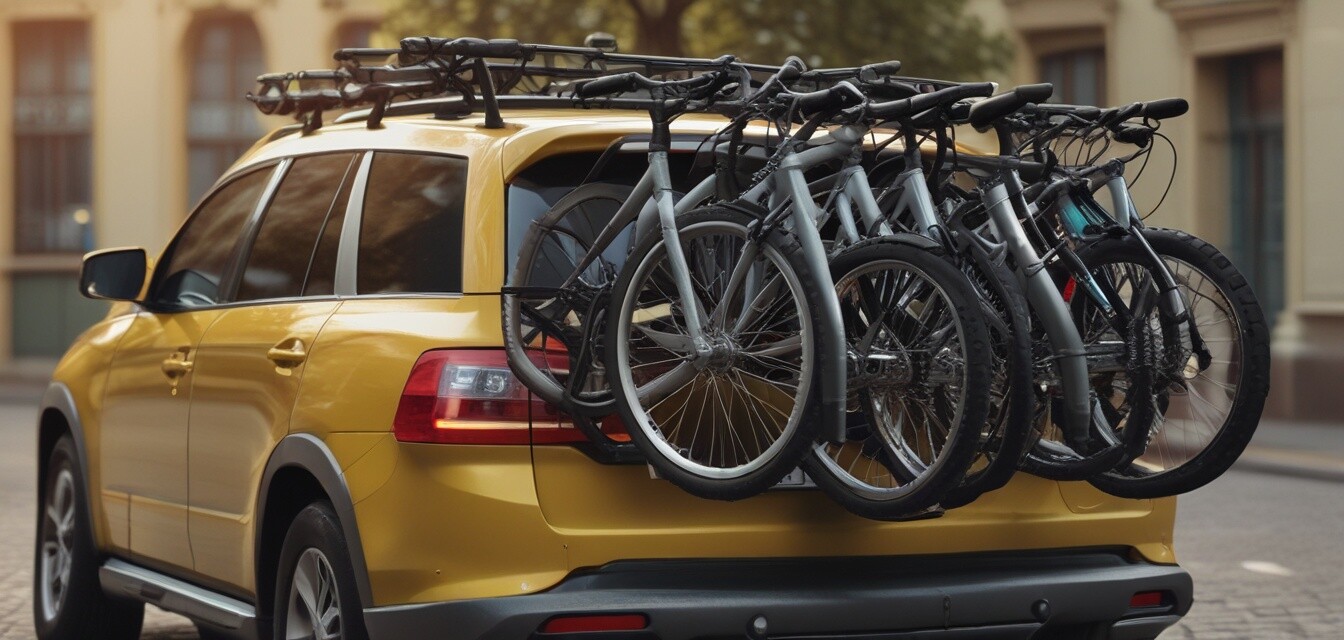
Safety Precautions for Using Bike Racks
- Always check the compatibility of the bike rack with your vehicle before use.
- Ensure your bicycles are secured properly to prevent accidents during transport.
- Adhere to all weight limits provided by the bike rack manufacturer.
- Regularly inspect your bike rack for any signs of wear or damage.
- Educate yourself on the local regulations regarding bike transportation.
Using a bike rack is a great way to transport your bikes safely, whether for a weekend trip or a daily commute. However, safety precautions should always be a priority to ensure the safety of both your equipment and other road users. Here, we'll explore essential safety tips and precautions for using bike racks effectively.
Types of Bike Racks
First, it’s essential to understand the different types of bike racks available on the market. Knowing the specific type can help you adhere to safety measures appropriately. The main types of bike racks include:
- Roof Racks: Mounted on the roof of the vehicle, allowing for the transport of bikes on top.
- Hitch Racks: Attached to the rear hitch of the vehicle, offering stability and ease of loading.
- Trunk Racks: Connected to the trunk or rear of the vehicle, suitable for light-use scenarios.
- Platform Racks: A type of hitch rack that allows for loading without lifting, ideal for heavy bikes.
Safety Precautions for Each Type
Different bike racks require different safety approaches. Here's a closer look:
| Type of Bike Rack | Safety Precautions |
|---|---|
| Roof Racks |
|
| Hitch Racks |
|
| Trunk Racks |
|
| Platform Racks |
|
General Safety Tips
- Inspect Your Rack: Before each use, perform a thorough inspection of your bike rack. Look for any loose parts, rust, or damage.
- Follow Manufacturer Guidelines: Always adhere to the manufacturer's instructions regarding weight limits, assembly, and maintenance.
- Secure Your Bikes: Make sure the bikes are tightly secured with straps and any additional locking mechanisms the rack provides.
- Protect Your Equipment: Consider using additional padding or rubber mats to protect the bike and vehicle from scratches and damage.
- Educate Yourself on Local Regulations: Some areas have specific laws about bike transport—make sure you are aware to avoid fines or accidents.
What to Avoid When Using Bike Racks
To ensure safety, it's just as important to know what to avoid. Here are common pitfalls to steer clear of:
- Overloading the rack beyond its weight limit.
- Neglecting to remove or properly secure loose parts.
- Transporting bikes in a manner that obstructs the vehicle’s lights or license plate.
- Using a rack that isn’t compatible with your vehicle type.
Consider Your Vehicle Type
A vehicle’s make and model will often dictate the type of bike rack that can safely be used. Find out more about the types of racks suitable for your vehicle by exploring our detailed guides on:
Conclusion
Maintaining safety when using bike racks ensures not only the security of your bikes but also the safety of everyone on the road. Regular checks, adhering to guidelines, and being informed about the products you use can go a long way in ensuring a safe transportation experience. Taking these simple precautions will lead to worry-free travels with your bikes. Happy riding!
Pros
- Easy to transport multiple bikes.
- Versatile solutions for different vehicle types.
- Promotes outdoor activities and cycling.
Cons
- Can lead to scratches or damage if not used properly.
- Requires regular maintenance and inspection.
- May obstruct vehicle lights or view if improperly positioned.
